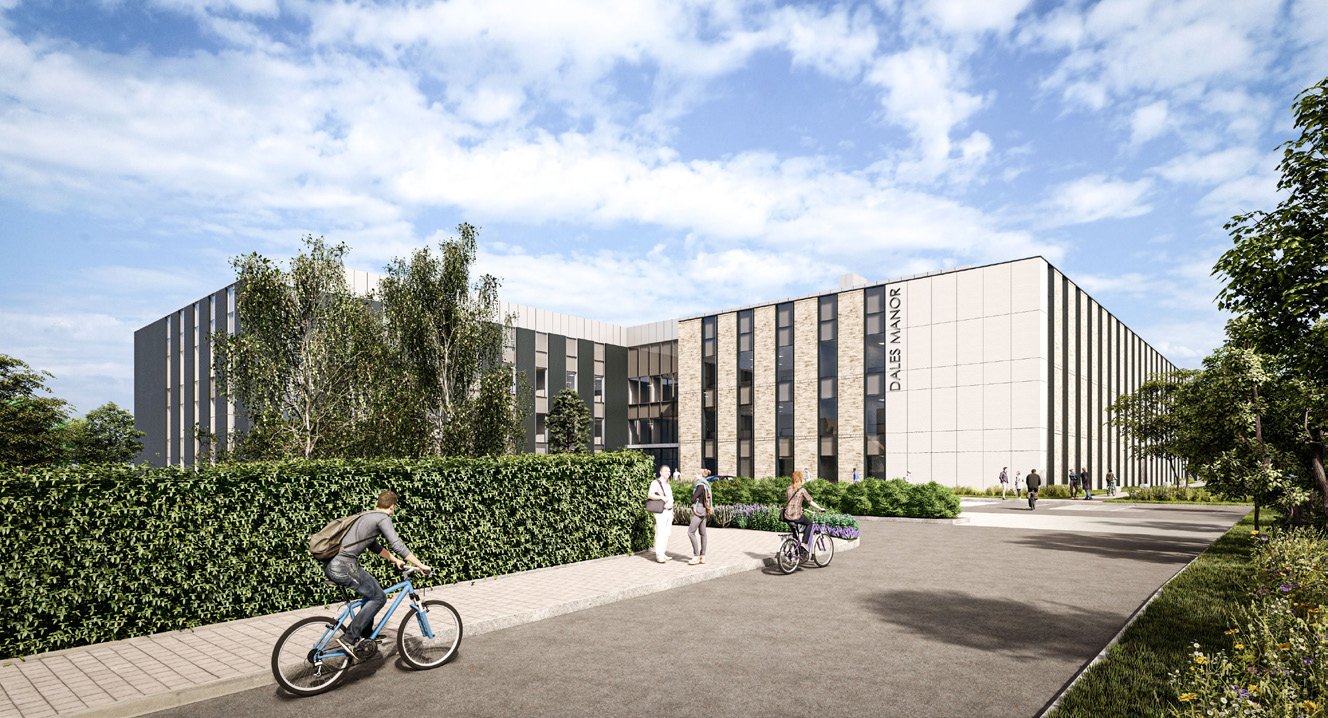The South Cambridge science cluster has emerged as one of the most dynamic and rapidly expanding areas within the Cambridge science and technology ecosystem. This analysis explores the unique characteristics, organisations and developments that make this region a force in Cambridge's commercial property landscape.
Geographic Context and Strategic Location
The South Cambridge cluster benefits from an exceptional strategic location. It is positioned advantageously along the A1307 corridor, 3-4 miles south of Cambridge city centre and within very close proximity to several key institutions and transport links. Most notably, it sits adjacent to the Cambridge Biomedical Campus (CBC), one of Europe's largest biomedical campuses. The CBC includes Addenbrooke's Hospital and Laboratory of Molecular Biology. The cluster possesses excellent connectivity to Cambridge University's primary sites, with many departments just 2-3 miles away.
The cluster's southern position offers several distinct advantages over other Cambridge clusters:
Compared to North Cambridge: Better access to London and Stansted Airport, typically less congestion, and more room for expansion
Compared to West Cambridge: More affordable real estate while maintaining excellent transport links
Compared to East Cambridge: Closer proximity to the city centre and key research institutions
Major South Cambridge Science Parks and Commercial Properties
Cambridge Biomedical Campus (CBC)
The Cambridge Biomedical Campus (CBC) stands as one of Europe's largest centres of health science and medical research. It is located on the southern fringe of Cambridge, approximately 3 miles from the city centre. The campus has evolved from its origins in the 1960s when Addenbrooke's Hospital was relocated to this site.
The campus traces its beginnings to 1962 when Addenbrooke's Hospital moved from its original central Cambridge location to Hills Road. However, the broader concept of an integrated biomedical campus took shape in the subsequent decades, with significant expansion occurring in the 1990s and 2000s.
Total site area: Approximately 170 acres (69 hectares)
Continuing expansion with additional 14 hectares approved for development
One of the largest medical research campuses in Europe
Key Buildings and Facilities
Addenbrooke's Hospital: The core NHS teaching hospital
Royal Papworth Hospital: Specialist heart and lung hospital (relocated to CBC in 2019)
Cancer Research UK Cambridge Institute
GlaxoSmithKline's Clinical Unit
AstraZeneca's global R&D headquarters and corporate headquarters
The Anne McLaren Building for regenerative medicine
The Laboratory of Molecular Biology (LMB)
University of Cambridge School of Clinical Medicine
· The Medical Research Council
The Jeffrey Cheah Biomedical Centre
The campus features a mix of clinical care facilities, research laboratories, educational buildings, and corporate offices. The result is an integrated environment healthcare delivery, research, and innovation. The architecture ranges from the functional hospital buildings of the 1960s to striking modern designs like the AstraZeneca headquarters, which showcases contemporary sustainable architecture.
Unity Campus
Unity Campus is a business and innovation park located in Sawston, south of Cambridge. The development combines refurbished industrial space and new-build elements. Unity offers modern flexible workspaces designed for science and technology companies. The campus features The Works, a 60,000 square feet collaborative workspace building, alongside additional R&D facilities and laboratories. The site provides a mix of office, research, and light industrial spaces with excellent amenities and transport links. Its design emphasizes sustainability and wellness, featuring open spaces and breakout areas. The campus forms part of the wider South Cambridge life science cluster, attracting established companies and scale-ups.
* The Works - 60,000 square feet multi-let building
* The Quad - modern laboratory and office space
* Future development phases planned for additional research facilities
Notable occupiers include the following organisations: Summit Therapeutics, Domainex, PhoreMost, Cuttsy+Cuttsy, Aqdot, Biocair, Liminal Biosciences, IONTAS and Sareum.
The South Cambridge Science Centre
A purpose-built 138,000 square feet facility ready for occupancy in April 2025. The development is by Abstract Group. The site offers high specification new laboratory space focusing on scientific research and development and commercial office space. The property claims the highest environmental standards in the region. It also boasts the lowest operating costs.
The South Cambridge Science Centre is strategically located in the heart of Sawston. It is less than 15 minutes’ drive to the south of the Cambridge Biomedical Campus; 13 minutes from Junction 9 on the M11; 30 minutes from Stansted Airport and 75 minutes train ride to central London.
Key features of the Science Centre include:
* Advanced wet and dry laboratory spaces
* Flexible low- cost office accommodation
* BREEAM “Excellent” EPC “A”
* 30% less expensive than competing commercial property
* Meeting and conference facilities
* Carbon neutral from zero fossil fuels
* Emphasis on collaborative networking
* Phase 2 development of 45,000 square feet scheduled for Q3 2026
Babraham Research Campus
Babraham Research Campus is technically just outside the South Cambridge cluster. However, the campus represents one of Cambridge's premier life science developments. It comprises 430,000 square feet of laboratory and office space across a 430-acre campus. The site combines Grade A commercial properties with research facilities, purpose-built for the biotech and life science sector.
The campus features flexible laboratory configurations, from starter units to large-scale facilities. It supports early-stage companies and established enterprises. Modern office spaces complement the laboratory facilities, with buildings designed to meet stringent environmental standards.
Key commercial features include secure 24/7 access, advanced building management systems and specialized waste management facilities. The site utilities are suitable for bioscience operations. The campus offers extensive parking, conferencing facilities, and on-site catering services.
Notable occupiers include PetMedix, Mission Therapeutics, Artios, bit.bio, Inivata, Kymab/Sanofi, Benevolent AI, Alchemab and Abzena.
Granta Park
Established in 1997 and located in the heart of the Cambridge life sciences cluster, Granta Park is a premier research and development campus. This 120-acre site houses 600,000 square feet of high-specification laboratory and office space. Many renowned biopharmaceutical and technology companies are occupiers. These include Illumina, Gilead Sciences, AstraZeneca, Sosei, Heptares, Bicycle Therapeutics, Altos Laboratories, Cancer Research UK, Pfizer, ThermoFisher Scientific, and Amphista Therapeutic.
The park features purpose-built facilities with flexible floorplates, advanced mechanical and electrical systems, and state-of-the-art laboratory infrastructure. On-site amenities include The Apiary conference centre, a fully equipped fitness centre and restaurant. The landscaped grounds incorporate walking trails, sports facilities, and designated wildlife areas.
Strategically positioned 7 miles southeast of Cambridge city centre, Granta Park offers connectivity via the A11/M11 corridor and is within easy reach of Stansted Airport
Capital Park
Capital Park is a Cambridge business park that was established in 1995. Situated on Fulbourn Road, the development comprises approximately 200,000 square feet of office and research space spread across multiple buildings.
The park features landscaped grounds with mature trees and a central water feature, creating an attractive working environment. On-site facilities include parking for tenants and visitors, a café, meeting rooms, and 24/7 security monitoring.
Major occupiers include technology companies and research organizations including Sygenta, Scientia Limited and ARM Holdings. The buildings are primarily two to three stories high, designed in a contemporary style with large windows to maximize natural light.
The park offers good transport links, being situated close to the A1307 and within easy reach of Cambridge city centre and the M11 motorway.
Notable Companies and Organizations in South Cambridge
The South Cambridge cluster hosts an impressive array of companies across various sectors, including:
Large Enterprises
· AstraZeneca
· Abcam
· Illumina
· GlaxoSmithKline (satellite facility)
· Microsoft Research
· ARM Holdings (satellite office)
· Johnson Matthey
Medium-Sized Companies
· Bicycle Therapeutics
· Cambridge Epigenetix
· PhoreMost
· Storm Therapeutics
· Mission Therapeutics
· F-star Therapeutics
· Microbiotica
Innovative Start-ups and Scale-ups
Mogrify- A cell reprogramming company that uses computational technology to convert any human cell type into another without going through stem cell or progenitor cell states. Their platform aims to develop scalable cell therapies for various diseases.
Bit.bio - Develops technology for precise cell programming, converting stem cells into specific human cell types.
PredictImmune - Develops tools for autoimmune diseases, particularly inflammatory bowel disease. Their tests help physicians identify patients who need aggressive early treatment versus those who can manage with milder therapies.
Congenica - A digital health company specializing in genomic data analysis software. Their platform helps clinicians interpret complex genomic data to diagnose rare diseases and hereditary cancers more accurately.
NextRNA Therapeutics - Their technology platform enables the discovery of small molecules that can modulate disease-causing RNA.
Phoremost - They focus on "undruggable" protein targets in cancer and other diseases.
PolyProx Therapeutics - Develops biotherapeutics targeting previously "undruggable" proteins in cancer.
Precision Medicine Catapult - They work to accelerate the adoption of innovative diagnostics and treatments.
Riverlane - A quantum computing company developing operating systems and software for quantum computers.
Research Infrastructure and Facilities
The South Cambridge cluster boasts several significant commercial properties comprising research facilities and infrastructure elements:
Laboratory Facilities
*The Laboratory of Molecular Biology (LMB)
* The Cancer Research UK Cambridge Institute
* The Heart and Lung Research Institute
* The Jeffrey Cheah Biomedical Centre
* The Anne McLaren Building
Support Infrastructure
* The Innovation Centre
* The Entrepreneurship Centre
* Multiple core facility services
* Shared equipment facilities
* Conference and meeting spaces
Competitive Advantages
a. Healthcare Integration
The proximity to Addenbrooke's Hospital and the Cambridge Biomedical Campus creates unique opportunities for:
* Clinical trials
* Patient engagement
* Translational research
* Healthcare innovation testing
* Medical technology validation
b. Academic Connections
Strong links to Cambridge University provide:
* Access to world-class research expertise
* Student talent pipeline
* Collaborative research opportunities
* Shared facilities access
* Knowledge transfer partnerships
c. Transport and Accessibility
The cluster benefits from:
* Direct access to the M11 motorway
* Proximity to Cambridge railway station
* Guided busway connection
* Planned Cambridge South railway station
* Extensive cycling infrastructure
Future Commercial Property and Infrastructure Developments
The South Cambridge cluster continues to expand with several significant developments planned or underway:
New Developments
* Extension of the Biomedical Campus
* Phase 2 at the South Cambridge Science Centre comprising 45,000 sq ft new build due to complete Q3 2026
* Phases 3-5 at the South Cambridge Science Centre in planning
* Additional phases at Unity Campus
* New laboratory and office spaces
Infrastructure Improvements
* Cambridge South railway station (scheduled completion 2025)
* Enhanced road connections
* Expanded cycling network
* Additional public transport services
Sustainability Initiatives
* Net-zero carbon buildings
* Green transport infrastructure
* Renewable energy installations
* Sustainable laboratory practices
Community and Ecosystem
The South Cambridge cluster has developed a vibrant community that supports innovation and collaboration:
Networking and Events
* Regular industry meetups
* Scientific conferences
* Innovation workshops
* Entrepreneurship programs
* Career fairs
Support Services
* Specialized legal firms
* Technical consultancies
* Patent attorneys
* Recruitment specialists
* Business development services
Conclusion
The South Cambridge science cluster represents a unique convergence of healthcare, scientific research and innovative commercial property. Its proximity to world-class academic and medical institutions, its diverse mix of multi-national to early-stage companies and access to excellent transportation make it strategically attractive. It is also a generally lower cost location for new laboratory and office space courtesy of new developments such as the South Cambridge Science Centre.
The high-quality commercial property developments under construction and those due for completion in 2025 and planned for 2026 will provide the capacity to ensure the South Cambridge region is well-positioned for continued growth and success in the coming years.



